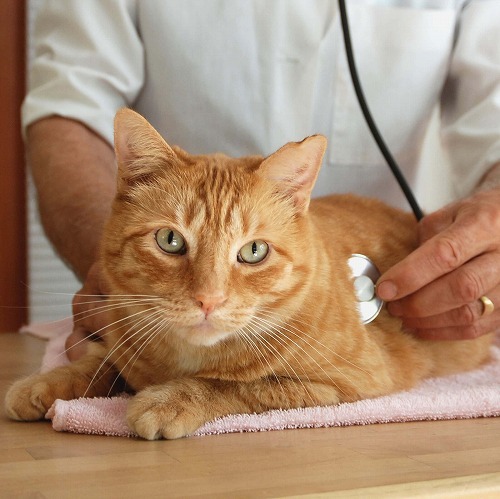|
|

Every time we take our cat to the vet it seems to cost a fortune. There are a number of procedures performed, a ton of strange jargon thrown at us, a bunch of shots given to our felines, and then vets recommending performing one test or another. Often times it can be very confusing and we are unsure of what things our cats actually need — and what they don’t.
A lot of the time we don’t even understand some of the words our veterinarians are using, making it difficult to make a decision one way or the other. While we want to keep our felines healthy and provide them with the care they need, we don’t want to spend a ton of money on things that our cats might not actually need. Here are some of the basic veterinary procedures and terms for our cats explained.
FIV and FeLV
These are two of the terms probably most commonly heard and most likely not understood. There are test for both of these viruses, and applicable vaccines as well. Let’s look at what each one means individually.
FIV: ‘Feline Immunodeficiency Virus’ or ‘Lentivirus’: This is a scary term for a virus that affects between 1.5-3% of the cat population — making it quite rare. It is a fancy word for a virus that most likely affects free-roaming, outdoor cats, and is hardly seen in the indoor population. It is a virus that later on in life will cause a cat’s immune system to break down and be more susceptible to other infections. Blood testing is performed in order to determine whether or not a cat has this virus, but even with a positive diagnosis, cats with FIV can live long, healthy lives.
FeLV: ‘Feline Leukemia Virus’: This is a virus that affects 2-3% of the cat population. It is a serious condition that is spread through contact with other cats. A simple blood test can determine whether or not a feline has this virus. It is easily preventable by keeping your cat away from contact with other possibly infected cats — and also by vaccination. All kittens should be tested for FeLV before they are purchased or adopted, and then given a series of shots to prevent the cat from acquiring the virus.
Before purchasing or adopting a kitten or cat, testing for FIV and FeLV are very important. After testing negative for FeLV you should have your veterinarian give your pet a series of FeLV shots.

Eye Problems
Conjunctivitis: This is the most common condition associated with your cat’s eyes. It is a very large word that means swelling of the eyelid. Symptoms include frequent blinking, squinting, and unusual discharge. It usually occurs in very young cats or those that have been exposed to airborne allergens. It is very treatable with eye drops and usually clears up quickly.
Kidney Conditions
Renal Amyloidosis: This large word relates to the cat’s kidneys. It is a serious condition that means a collection of harmful substances are building up in kidney tissue and causing kidney failure. Symptoms of this disease include drinking more water, eating less, and losing weight. The condition most commonly occurs in Abyssinian cats.
Heart Conditions
Cardiomyopathy: This term relates to the cat’s heart and is basically a disease that affects the muscles of the heart. It is a serious condition that can eventually lead to breathing problems and blood clots, but some cats still live very long lives. This disease is often a result of genetic or unknown origins and can also be caused by high blood pressure.
Thyroid Problems
Hyperthyroidism: This is a very common disease in cats. It means that the cat’s organ called the thyroid is producing too much of a thyroid hormone and is increasing the metabolism of the cat’s body. Symptoms include weight loss, eating more, vomiting, drinking more, and poor hair coat. A blood test can determine the presence of the disease. Luckily, it can be easily managed with medication.
Tag
Tag